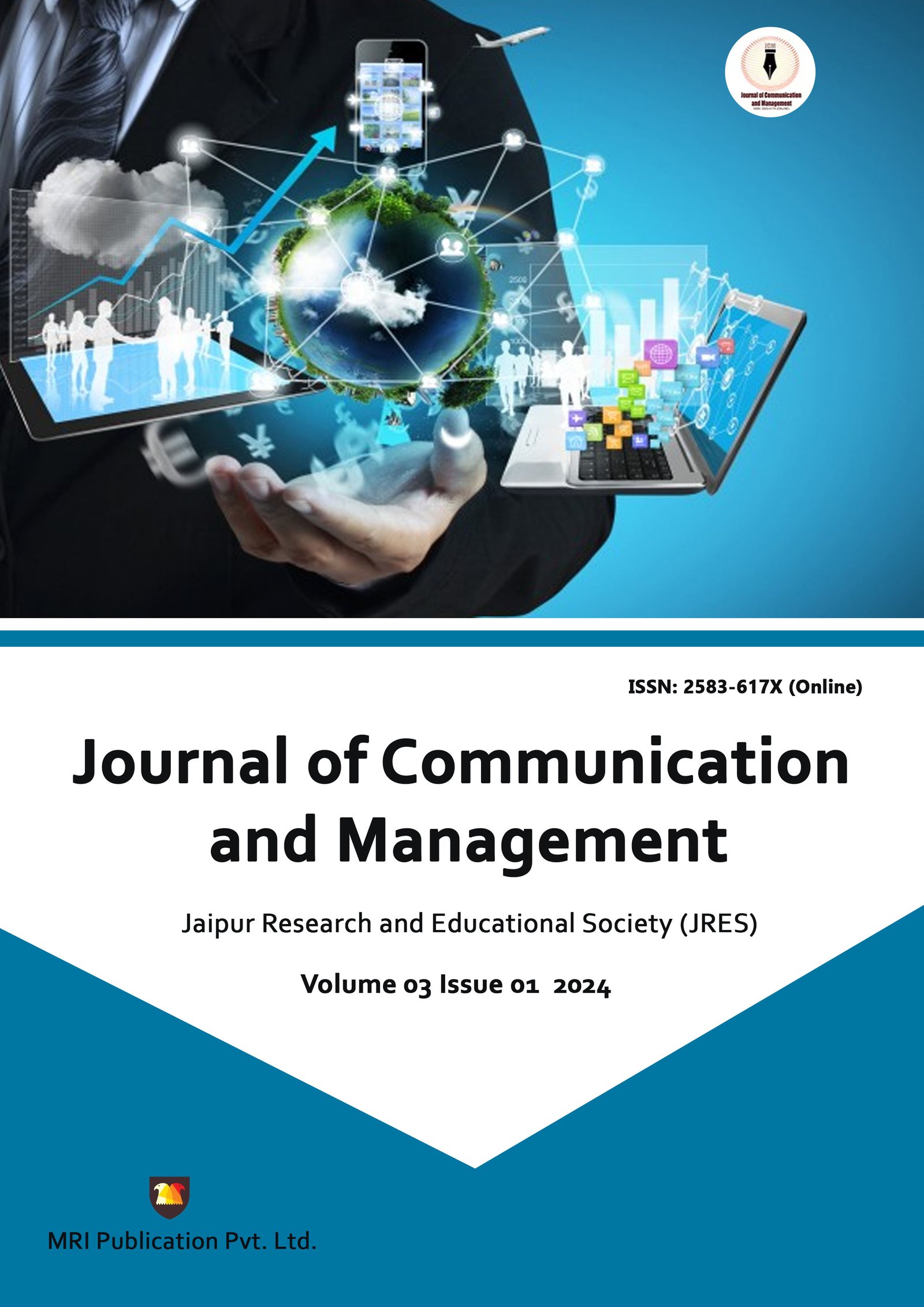Post-Pandemic Health Communication: Adoption of Digital Technologies in Healthcare by Residents of Mumbai
DOI:
https://doi.org/10.58966/JCM2024313Abstract
Digitalization has become an important part of human lives in many fields, ranging from education to healthcare. Digital technologies are one of the priorities in the development of the healthcare sector worldwide. During the COVID-19 pandemic, patients became more engaged about medical communication and used digital technologies than ever. Health professionals started using more online/digital platforms to provide patients prescriptions and check patients’ reports. This paper is aimed at examining various forms of digital platforms on healthcare, which patients use for consultation with health professionals. This study is an exploratory observational study in which researcher conducted a semi-structured interviewsin Mumbai suburban housing society. The objectives were to understand nature of health communication post pandemic, perception of family about health and which digital platforms they are using? How are igital platforms being helpful in day-to-day life ? The Study found that most respondents still use an online consultation option with their doctors, pharmacy and lab investigation. The reasons for using digital platforms in spite of scope for physical outreach are time, money and energy savings. They visit hospital or doctor’s clinic in emergency or on unavoidable situations. It was also found that some organizations that pay medical benefits to their staff also started collecting medical prescriptions via WhatsApp. The study emphasizes the importance of digital platform, time and health communication in post pandemic world. The majority of respondents were satisfied with the digital platforms and would like to continue in the future. Among all digital platforms “WhatsApp” was most popular and used, which is still getting used in India. The respondents had significant impact by the use of digital platforms. Although some respondents showed concern related to data privacy. This also indicate shift from oral, face to face communication to mediated digital communication in Asian societies.:Digitalization has become an important part of human lives in many fields, ranging from education to healthcare. Digital technologies are one of the priorities in the development of the healthcare sector worldwide. During the COVID-19 pandemic, patients became more engaged about medical communication
and used digital technologies than ever. Health professionals started using more online/digital platforms to provide patients prescriptions and check patients’ reports. This paper is aimed at examining various forms of digital platforms on healthcare, which patients use for consultation with health professionals. This
study is an exploratory observational study in which researcher conducted a semi-structured interviews in Mumbai suburban housing society. The objectives were to understand nature of health communication post pandemic, perception of family about health and which digital platforms they are using? How are digital platforms being helpful in day-to-day life ? The Study found that most respondents still use an online consultation option with their doctors, pharmacy and lab investigation. Thereasons for using digital platforms in spite of scope for physical outreach are time, money and energy savings. They visit hospital or doctor’s clinic in emergency or on unavoidable situations. It was also found that some organizations that
pay medical benefits to their staff also started collecting medical prescriptions via WhatsApp. The study emphasizes the importance of digital platform, time and health communication in post pandemic world. The majority of respondents were satisfied with the digital platforms and would like to continue in the
future. Among all digital platforms “WhatsApp” was most popular and used, which is still getting used in India. The respondents had significant impact by the use of digital platforms. Although some respondents showed concern related to data privacy. This also indicate shift from oral, face to face communication to mediated digital communication in Asian societies.:
References
References
• Batra S, Baker RA, Wang T, Forma F, DiBiasi F, Peters-Strickland T. Digital health technology for use in patients with serious mental illness: a systematic review of the literature. MDER 2017 Oct 4;Volume 10:237-251 [doi:10.2147/mder.s144158]
• Brem, A., Viardot, E., & Nylund, P.A. (2021). Implications of the coronavirus (COVID-19) outbreak for innovation: which technologies will improve our lives?Technol. Forecast. Soc. Change. DOI: 10.1016/j.techfore.2020.120451.
• Datta, P., & Nwankpa, J.K. (2021). Digital transformation and the COVID-19 crisis continuity planning. J. Inf. Technol. Teach. Cases. DOI: 10.1177/ 2043886921994821.
• Gewin V. Five tips for moving teaching online as COVID-19 takes hold. Nature. 2020;580(7802):295–296. PMID: 32210377. https://doi.org/10.1038/d41586-020-00896-7
• Jafari-Sadeghi, V., Garcia-Perez, A., Candelo, E., Couturier, J., 2021. Exploring the impact of digital transformation on technology entrepreneurship and technological market expansion: the role of technology readiness, exploration and exploitation. J. Bus. Res. 124, 100–111.
• Kissler SM, Tedijanto C, Goldstein E, et al. Projecting the transmission dynamics of SARS-CoV-2 through the postpandemic period [published online ahead of print, 2020 Apr 14]. Science. 2020;eabb5793. PMID: 32291278. https://10.1126/science.abb5793
• Municipal Corporation of Greater Mumbai. Civic Diary 2020. 62nd Annual Publication. Last accessed on 2020 May 23 Available from: portal.mcgm.gov.in
• Paraskevi El. Skarpa, Emmanouel Garoufallou, Information seeking behavior and COVID-19 pandemic: A snapshot of young, middle aged and senior individuals in Greece, International Journal of Medical Informatics,Volume 150, 2021,104465,ISSN 1386-5056, https://doi.org/10.1016/j.ijmedinf.2021.104465. (https://www.sciencedirect.com/science/article/pii/S1386505621000915)
• Ramsetty A, Adams C. Impact of the digital divide in the age of COVID-19 [published online ahead of print, 2020 Apr 28]. JAm Med Inform Assoc. 2020;ocaa078. PMID: 32343813. https://doi.org/10.1093/jamia/ocaa078
• Robbins T, Hudson S, Ray P, et al. COVID-19: A new digital dawn?. Digit Health. 2020;6:2055207620920083. Published 2020 Apr 11. PMID: 32313668. https://doi.org/10.1177/2055207620920083
• Schiavone, F., Mancini, D., Leone, D., & Lavorato, D. (2021). Digital business models and ridesharing for value co-creation in healthcare: a multi-stakeholder ecosystem analysis. Technol. Forecast. Soc. Change. DOI: 10.1016/j.techfore.2021.120647.
• Volberda, H.W., Khanagha, S., Baden-Fuller, C., Mihalache, O.R., & Birkinshaw, J. (2021). Strategizing in a digital world: overcoming cognitive barriers, reconfiguring routines and introducing new organizational forms. Long Range Plann. DOI: 10.1016/j.lrp.2021.102110.





